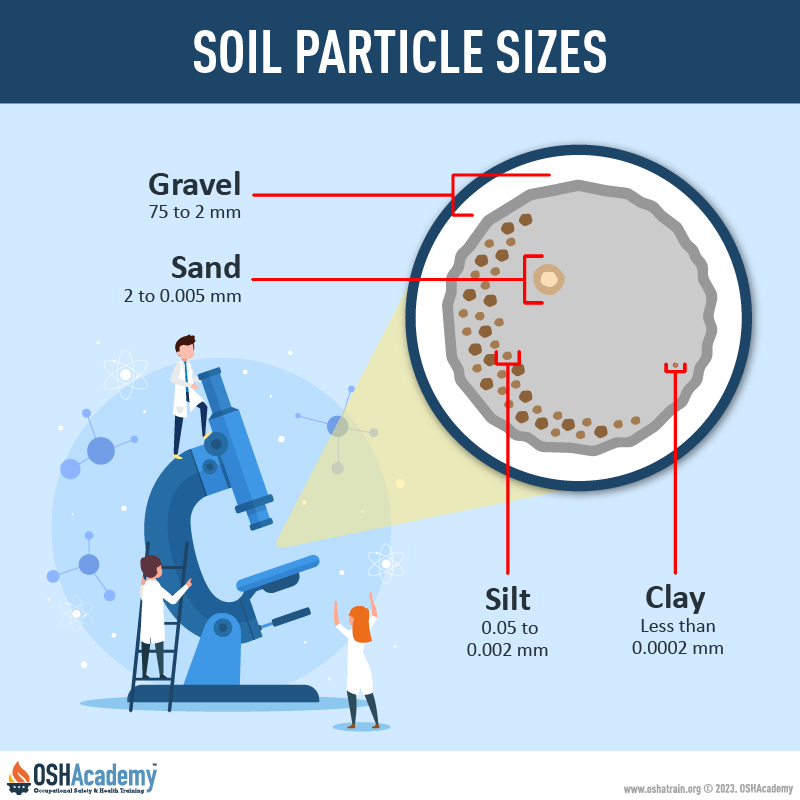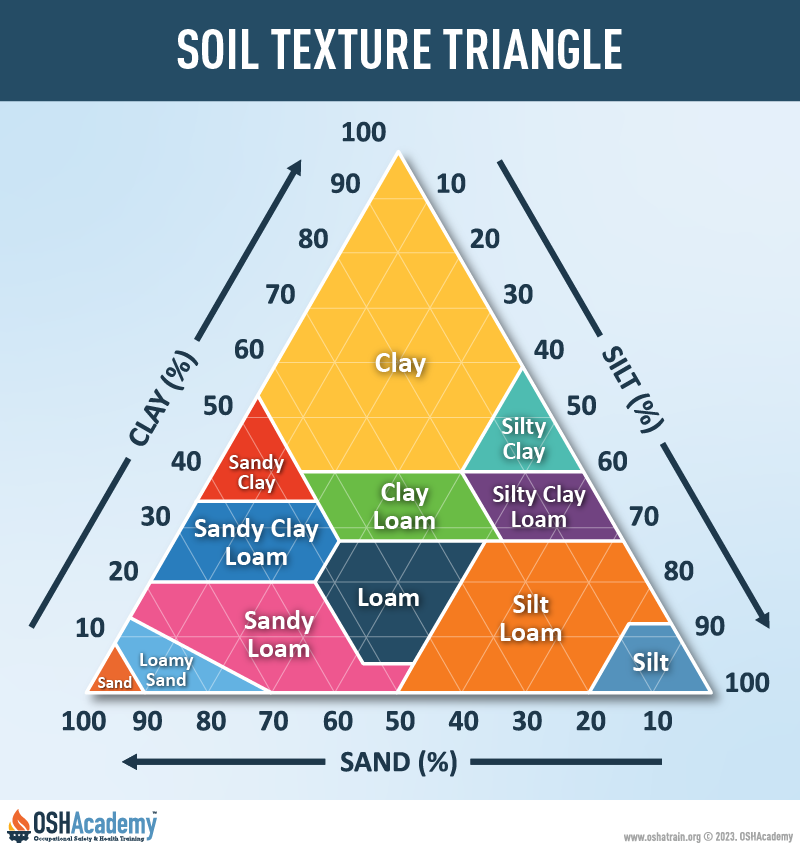Soil Types
The soil found at a site is usually a mixture of one or more of the basic types listed below. From the amounts of each soil type blended together to form the actual soil conditions, descriptive soil terms are combined in the order of lowest content to highest content.
For example, soil classified as "silty clay" is a mixture of mostly clay with noticeable but lesser amounts of silt. The single term "loam" is used to describe a mixture of clay, sand and silt.
The types of soil found most often include:
- Loose soil is any type of soil that has been worked or disturbed so that it is not compacted.
- Sand is a granular soil. The shape of individual grains may be round or angular. Sandy soil tends to have large pores, allowing faster ground absorption. In most situations, sandy soil is the easiest to compact with vibration.
- Silt has properties intermediate between fine sand and clay. Silt is the most sensitive to changes in soil moisture content. Silt tends to crumble with drying.
- Clay is a very, very fine-grained soil. In general, water moves slowly through clay. Large amounts of rainfall may pond on the surface and evaporate before being absorbed.
- Loam is a combination of sand, silt, and clay such that the beneficial properties from each is included.
Cemented soil means a soil in which the particles are held together by a chemical agent, such as calcium carbonate, such that a hand-size sample cannot be crushed into powder or individual soil particles by finger pressure.
Cohesive soil means clay, or soil with a high clay content, which has cohesive strength. Cohesive soil does not crumble, can be excavated with vertical sides, and is plastic when moist.
Dry soil means soil that does not exhibit visible signs of moisture content.Fissured means a soil material that has a tendency to break along definite planes of fracture with little resistance, or a material that exhibits open cracks, such as tension cracks, in an exposed surface.
Granular soil means gravel, sand, or silt with little or no clay content. Granular soil has no cohesive strength, though some moist granular soils exhibit apparent cohesion. Granular soil cannot be molded when moist and crumbles easily when dry.
Granular cohesionless soil means soil that contains less than 85% sand and gravel but does not contain enough clay to be molded.
Layered system means two or more distinctly different soil or rock types arranged in layers. Micaceous seams or weakened planes in rock or shale are considered layered.
Moist soil means a condition in which a soil looks and feels damp. Moist cohesive soil can easily be shaped into a ball and rolled into small diameter threads before crumbling. Moist granular soil that contains some cohesive material will exhibit signs of cohesion between particles.
Plastic means a property of a soil which allows the soil to be deformed or molded without cracking, or appreciable volume change.
Saturated soil means a soil in which the voids are filled with water. Saturation does not require flow. Saturation, or near saturation, is necessary for the proper use of instruments such as a pocket penetrometer or sheer vane.
Soil classification system means, for the purpose of this subpart, a method of categorizing soil and rock deposits in a hierarchy of Stable Rock, Type A, Type B, and Type C, in decreasing order of stability. The categories are determined based on an analysis of the properties and performance characteristics of the deposits and the environmental conditions of exposure.
Stable rock means natural solid mineral matter that can be excavated with vertical sides and remain intact while exposed.
Submerged soil means soil which is underwater or is free seeping.
Knowledge Check Choose the best answer for the question.
2-2. Which soil type is a granular, has large pores, and is easy to compact?
You forgot to answer the question!


